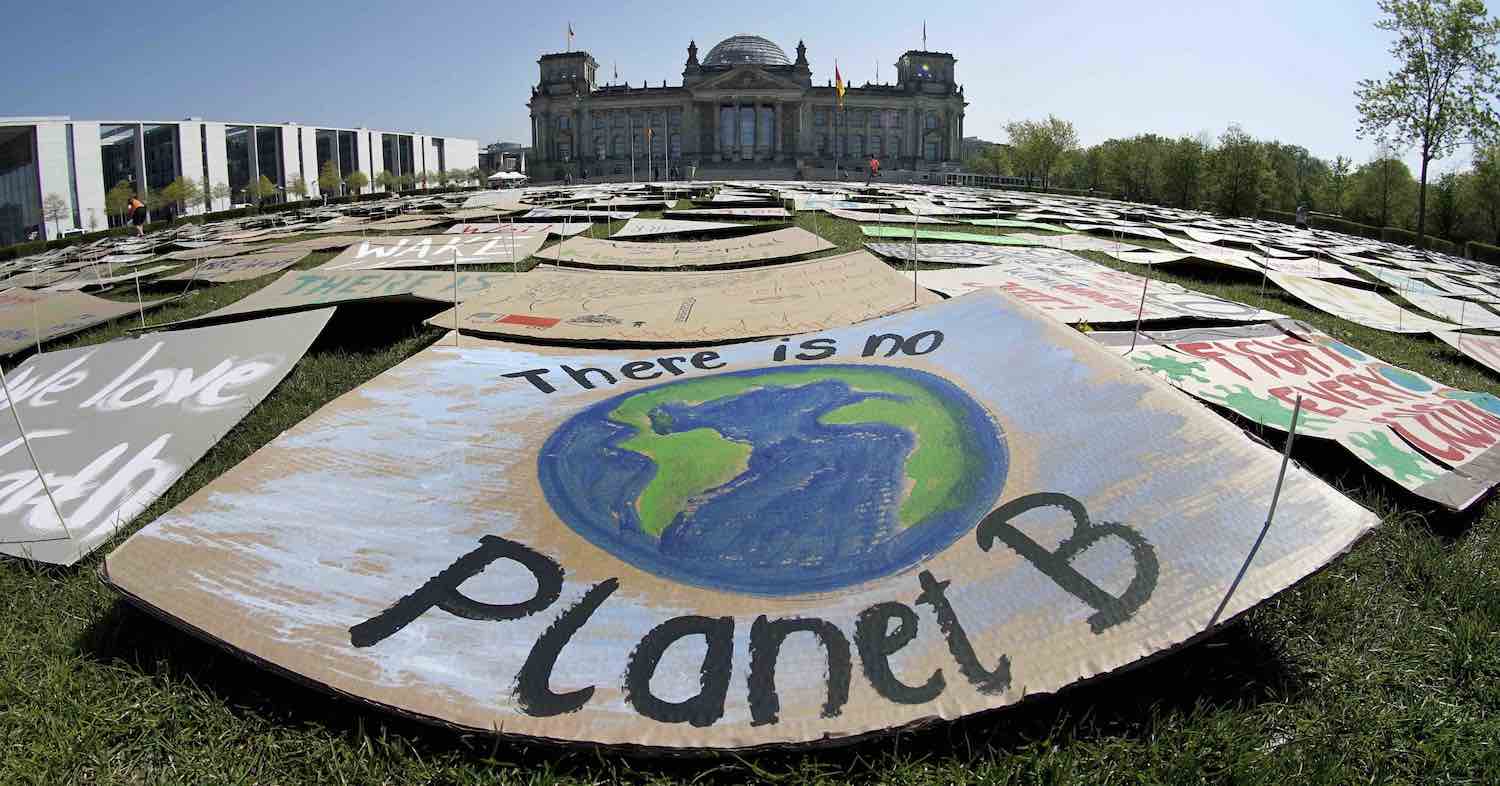And there we have it. After a final scrappy and torturous week of debate over whether Australia should accept the inevitable, we finally have a bi-partisan (or tri-partisan) agreement on a net-zero emissions target for 2050.
While we are yet to see the fine print of the Coalition agreement, the Prime Minister will be able to attend the Conference of the Parties in Glasgow (COP26) next week with a long-overdue commitment to net-zero emissions by 2050 to wave about.
And while the grudging acceptance of our governing parties and the unsightly process of the whole affair may dull the sense of achievement, we must reflect on the significance of this moment.
Australian politics has torn itself apart time and again over the past two decades on how we should face up to climate change and the decarbonisation of the global and domestic economies.
Everyone who has played a part in arguing for Australia to listen to the science, recognise the severe impacts of a warming planet, take action to reduce emissions, and embrace the economic opportunities of the transition – not simply count the costs – should take a moment to celebrate the fact that we have finally won the argument. It has taken a generation to make the change, but then no major societal shifts happen overnight.
There has been an incredible campaign waged for the past two decades by fossil fuel interests (and those dependent on them) and sections of the media to hold back the tide, but the wall they built has collapsed and they can hold back the tide no longer.
Many, if not most, of the folks I know who work within the renewable energy sector have been drawn here by their concern to do something about climate change. So this victory will mean much more for most of us than just a huge business opportunity. It will be an affirmation of the reason we get up in the morning.
But while the commitment to a 2050 net-zero target is a historic achievement, it is only the beginning of what the Federal Government must do. Without a comprehensive national plan for achieving the target, it will represent no more than a wish.
The government should begin by legislating the 2050 target (something it could do by passing Zali Steggall’s Climate Change Bill currently before the House of Representatives) and then set about drawing up detailed plans to decarbonise every sector of the Australian economy. We currently have no plans and mechanisms that can provide any confidence or certainty that we will hit a net-zero emissions target.
More pressingly, however, there is one other thing that Scott Morrison should be taking in his carry-on to Glasgow, and that’s a revised 2030 emissions reduction target. In the heat of last week’s wrangling, the Nationals declared that a revised 2030 target (currently a 26-28 per cent reduction on 2005 levels) was “off the table”.
The junior Coalition partner (and much of the media) seems to have forgotten, however, that the 2015 Paris Agreement required those ‘parties whose intended nationally determined contribution (NDC) contains a time frame up to 2030 to communicate or update by 2020 these contributions and to do so every five years’.
Further, these NDCs should reflect signatories’ ‘highest possible ambition’. Read: bring a more ambitious target to Glasgow (originally scheduled for 2020).
The Prime Minister has repeatedly boasted that Australia will “meet and beat” its 2030 target. Whether or not you buy it, it’s an instant admission that Australia is not putting forward a target that represents its highest possible ambition. We can do better.
ClimateWorks Australia put out a great short report a couple of weeks ago showing that if the government simply reflected the emissions reductions already committed to by states and territories, we would be putting forward a 37-42 per cent emissions reduction target for 2030.
Suppose we put forward a target that enjoyed the overwhelming support of Australia’s largest businesses (via the Business Council of Australia). In that case, we’d be putting forward a target of 46-50 per cent by 2030.
And if we put forward a target that paid heed to what Australia’s emissions reduction contribution would be to keeping temperature increases to 1.5°C, it would be a 74 per cent cut by 2030 (based on the advice of the independent Climate Targets Panel).
Any way you look at it, we can aim higher.
In keeping our current paltry 2030 target, the government applies an artificial handbrake on climate action and clean energy investment.
The electricity sector has long been considered the low-hanging fruit in the decarbonisation journey. The renewable energy industry stands at the ready to go harder and faster to support the accelerated transition of other sectors that will rely on our clean electrons. With clear, market-based policy frameworks in place and a focus on removing the barriers to investment (e.g. transmission), we could fully transition the electricity sector by 2030.
Suppose we could get electricity generation emissions alone to zero (or let’s say ‘close to’ for the avoidance of argument). In that case, we could achieve a 44 per cent emissions reduction on 2005 levels.
With all this evidence pointing to the fact that we can do more and we should do more, there are no excuses – Scott Morrison must also take a revised 2030 target to Glasgow.
I’ll be heading to Glasgow this weekend too, to make sure that the government and our international peers are crystal clear that Australia’s renewable energy sector welcomes the challenge to go harder and faster and that the only impediment is political will.
Anna Freeman is Policy Director with the Clean Energy Council.










